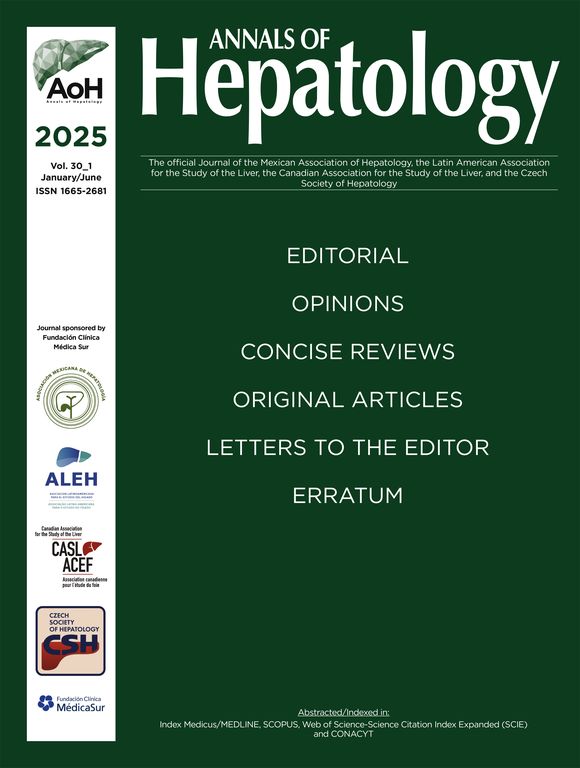
Abstracts of the 2024 Annual Meeting of the ALEH
More infoNo
Introduction and ObjectivesLiver disease is a health problem that accounts for more than 2 million deaths per year worldwide. Valproic acid (VPA) has been used as a hepatotoxic agent in animal models to reproduce liver damage and test future therapeutic strategies. Flourensia cernua (Fc) is a plant that contains compounds with antioxidant activity, which may have a potential hepatoprotective effect.
The aim was to evaluate the hepatoprotective activity of Flourensia cernua and its impact on aerobic intestinal microbiota in a valproic acid-induced damage model in Wistar rats.
Patients / Materials and MethodsSeven groups were used (n=6): 1) Sham, 2) VPA, 500 mg/kg of VPA/d/7d i.p., 3) Fc extract at 200 mg/kg/d/3d p.o., 4) Fc extract at 400 mg/kg/d/3d p.o., 5) VPA + Fc 200 mg/kg/d/3d p.o., 6) VPA + Fc 400 mg/kg/d/3d p.o., 7) VPA + Silibinin 200 mg/kg/d/3d p.o.; subsequently, the animals were sacrificed, and samples of faeces, blood, and liver tissue were taken for aerobic intestinal microbiota(AIM), biochemical markers, oxidative stress, and histological analysis, respectively. Data was analyzed using Prism software (v. 10.0.0; GraphPad). P<0.05 was statistically significant.
Results and DiscussionVPA significantly increased ALT, AST and decreased total proteins vs. Sham. There was no alteration of transaminases at both tested doses of Fc extract. Only the VPA + Fc 400 mg/kg group showed a significant reduction in ALT, AST, SOD, and MDA vs. VPA, similar to silibinin. The histological analysis did not show significant changes in the study groups. MALDI-TOF primarily identified Klebsiella pneumoniae, Pseudomonas aeruginosa, Escherichia coli, and Ochrobactrum intermedium as AIM in the different study groups.
ConclusionsThe hydroalcoholic extract of F. cernua did not show toxicity at the evaluated doses, showed a hepatoprotective effect at 400 mg/kg, and did not modify AIM. VPA decreased AIM, and F. cernua showed a trend to partially restore the normal bacterial count, similar to silibinin.








